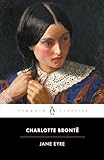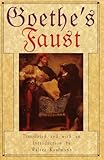


 Lately I’ve been on a kick where I’m rereading all of the classics I read years ago, and catching up on a few stray ones that I missed. Since I’m a bit of a gourmet and I have food allergies, I spend a great deal of time in the kitchen. And while I’m shopping, cooking, cleaning, and taking my daily walks in the hills behind my house, I always have an audiobook in my ear. This year I listened to: The Iliad, The Decameron, Vanity Fair, Eugénie Grandet, Cousin Bette, The Charterhouse of Parma, The Moonstone, Sentimental Education, The Guermantes Way, 20,000 Leagues Under the Sea, The Way of All Flesh, Jude the Obscure, The Tenant of Wildfell Hall, The Hunchback of Notre Dame, Jane Eyre, Absalom, Absalom!, Dangerous Liaisons, Midnight’s Children, The Secret History, The Death of Ivan Ilyich, and Journey to the End of the Night. I enjoyed all of these immensely; my favorites were the French novels. No one brings decadent Parisian characters to life in their exquisite salons like Proust and Flaubert, and no one is as wicked about La Comédie Humaine as Balzac (although Butler and Thackeray are close seconds). And Jane Eyre and Anna Karenina are two of my perennial favorites. My least favorite was the Jules Verne, which was only interesting to me insofar as it described the underwater landscapes. I also listened to my own debut novel Bluebeard’s Castle, read by a top-notch British female narrator hiding under a pseudonym (yes, it’s that scandalous)!
Lately I’ve been on a kick where I’m rereading all of the classics I read years ago, and catching up on a few stray ones that I missed. Since I’m a bit of a gourmet and I have food allergies, I spend a great deal of time in the kitchen. And while I’m shopping, cooking, cleaning, and taking my daily walks in the hills behind my house, I always have an audiobook in my ear. This year I listened to: The Iliad, The Decameron, Vanity Fair, Eugénie Grandet, Cousin Bette, The Charterhouse of Parma, The Moonstone, Sentimental Education, The Guermantes Way, 20,000 Leagues Under the Sea, The Way of All Flesh, Jude the Obscure, The Tenant of Wildfell Hall, The Hunchback of Notre Dame, Jane Eyre, Absalom, Absalom!, Dangerous Liaisons, Midnight’s Children, The Secret History, The Death of Ivan Ilyich, and Journey to the End of the Night. I enjoyed all of these immensely; my favorites were the French novels. No one brings decadent Parisian characters to life in their exquisite salons like Proust and Flaubert, and no one is as wicked about La Comédie Humaine as Balzac (although Butler and Thackeray are close seconds). And Jane Eyre and Anna Karenina are two of my perennial favorites. My least favorite was the Jules Verne, which was only interesting to me insofar as it described the underwater landscapes. I also listened to my own debut novel Bluebeard’s Castle, read by a top-notch British female narrator hiding under a pseudonym (yes, it’s that scandalous)!



 Classics I read in print included The Robbers (very melodramatic, featuring three great villains), The Story of the Eye (possibly the most joyously obscene novel I’ve ever consumed), Inferno (the John Ciardi translation—stunning), Faust (Walter Kaufmann’s translation with the German on the opposite page, which is incredible poetry), The Waning of the Middle Ages (a vivid and illuminating portrait of medieval life), Aura (in the original Spanish, gorgeous), and The Second Sex (a sort of bible for me).
Classics I read in print included The Robbers (very melodramatic, featuring three great villains), The Story of the Eye (possibly the most joyously obscene novel I’ve ever consumed), Inferno (the John Ciardi translation—stunning), Faust (Walter Kaufmann’s translation with the German on the opposite page, which is incredible poetry), The Waning of the Middle Ages (a vivid and illuminating portrait of medieval life), Aura (in the original Spanish, gorgeous), and The Second Sex (a sort of bible for me).


 The rest of my reading consisted of books written by women. These include The First Bad Man, about a mousy middle-aged woman who falls in love with a young, slovenly, vapid, violent blonde bombshell, and has a baby with her; and the satirical Eileen and My Year of Rest and Relaxation, both of which feature female protagonists who are jaw-droppingly sociopathic and awful, in ways that made me laugh out loud. The casual cruelty of some of the characters in these three books, especially parents, felt unsettlingly realistic.
The rest of my reading consisted of books written by women. These include The First Bad Man, about a mousy middle-aged woman who falls in love with a young, slovenly, vapid, violent blonde bombshell, and has a baby with her; and the satirical Eileen and My Year of Rest and Relaxation, both of which feature female protagonists who are jaw-droppingly sociopathic and awful, in ways that made me laugh out loud. The casual cruelty of some of the characters in these three books, especially parents, felt unsettlingly realistic.

 I also read In a Lonely Place, a grim portrait of a serial killer, and a view into his sick and twisted mind. Unlike the film adaptation starring Humphrey Bogart and Gloria Grahame, it’s a true horror novel that refuses to romanticize the sociopathic Dix Steele or to make excuses for his violence. I found it quite scary and effective. Another book I read this year that I first encountered as a classic Hollywood film was Dragonwyck, an entertaining novel about a beautiful ingenue who marries a tyrant with a Gothic mansion on the Hudson River, in a story which includes first love, beautiful frocks, intrigue, sex, cruelty, deception, adventure, a ghost, drug addiction, and murder. It’s quite racy for the 1940s; for instance, Nicholas’ sexual sadism gives Miranda “a dark pleasure” (shudder).
I also read In a Lonely Place, a grim portrait of a serial killer, and a view into his sick and twisted mind. Unlike the film adaptation starring Humphrey Bogart and Gloria Grahame, it’s a true horror novel that refuses to romanticize the sociopathic Dix Steele or to make excuses for his violence. I found it quite scary and effective. Another book I read this year that I first encountered as a classic Hollywood film was Dragonwyck, an entertaining novel about a beautiful ingenue who marries a tyrant with a Gothic mansion on the Hudson River, in a story which includes first love, beautiful frocks, intrigue, sex, cruelty, deception, adventure, a ghost, drug addiction, and murder. It’s quite racy for the 1940s; for instance, Nicholas’ sexual sadism gives Miranda “a dark pleasure” (shudder).



 I also read the amazing Will and Testament, in which the narrator details in clinical and brutal fashion her childhood abuse at the hands of her father, and the ensuing denial, shunning, and gaslighting from her mother and sister; and Mr. Fox, a delightfully inventive novel consisting of intertwining stories by and about different sorts of foxes, authors, muses, and murderous husbands. Other novels I enjoyed were My Sweet Audrina, an overwrought Southern Gothic melodrama which is remarkably astute about controlling men, sexual trauma, and the drudge of women’s daily lives; and Normal People, which in my opinion is not a love story, but a horror story about an unavailable man who causes chaos and destruction by way of his infuriating thoughtlessness.
I also read the amazing Will and Testament, in which the narrator details in clinical and brutal fashion her childhood abuse at the hands of her father, and the ensuing denial, shunning, and gaslighting from her mother and sister; and Mr. Fox, a delightfully inventive novel consisting of intertwining stories by and about different sorts of foxes, authors, muses, and murderous husbands. Other novels I enjoyed were My Sweet Audrina, an overwrought Southern Gothic melodrama which is remarkably astute about controlling men, sexual trauma, and the drudge of women’s daily lives; and Normal People, which in my opinion is not a love story, but a horror story about an unavailable man who causes chaos and destruction by way of his infuriating thoughtlessness.
 My favorite new-to-me novel this year was Voyage in the Dark. The main character Anna, an eighteen-year-old girl transplanted from the West Indies, is abandoned by her family and left to fend for herself in cold, foggy, impersonal London, where all of the buildings look alike and she can imagine no viable future for herself. She is always shivering and often ill, and she is continually uneasy, tired, and out of place. While on tour as a chorus girl in a show, she and her roommate pick up two men in a seedy part of England, one of whom buys her stockings. After he invites her to a private dinner, he changes his mind about raping her, pays her rent, and gives her money for clothes. Because she moves in a world where “clothes are often worth more than the girl inside them,” this act of generosity is enough to make her his mistress, and he takes her virginity. As she’s climbing the stairs to his bedroom she changes her mind, and he sees her face and tells her to “be brave.” She recounts this experience only as pain, and yet she falls in love with him soon afterwards and becomes anxious about his absences; things just spiral downward from there.
My favorite new-to-me novel this year was Voyage in the Dark. The main character Anna, an eighteen-year-old girl transplanted from the West Indies, is abandoned by her family and left to fend for herself in cold, foggy, impersonal London, where all of the buildings look alike and she can imagine no viable future for herself. She is always shivering and often ill, and she is continually uneasy, tired, and out of place. While on tour as a chorus girl in a show, she and her roommate pick up two men in a seedy part of England, one of whom buys her stockings. After he invites her to a private dinner, he changes his mind about raping her, pays her rent, and gives her money for clothes. Because she moves in a world where “clothes are often worth more than the girl inside them,” this act of generosity is enough to make her his mistress, and he takes her virginity. As she’s climbing the stairs to his bedroom she changes her mind, and he sees her face and tells her to “be brave.” She recounts this experience only as pain, and yet she falls in love with him soon afterwards and becomes anxious about his absences; things just spiral downward from there.
The women in this novel are constantly talking about how men are no good, and how you have to take them for what you can get. And Anna is constantly aware of people sneering at her, and of a high, dark wall in society she’ll never be able to climb. It’s a world that’s familiar from watching pre-code movies about working girls who are forced to make ends meet by living off of rich (usually married) men. The prose is very effective—simple, clear, incisive. Jean Rhys’s writing feels very personal for me, the way it speaks to a type of lived female experience that is so rare and undervalued in literature. And despite the Edwardian setting, some parts of it feel as if they could have been written yesterday.
 Last, I was gobsmacked by Maria Tatar’s Lustmord: Sexual Murder in Weimar Germany. This book analyzes German expressionist art by painters such as Otto Dix and George Grozs, who painted numerous canvases depicting the graphic sexual murder of women, some of them self-portraits with themselves as the killer. The thing that makes Lustmord so spectacular is its feminist analysis; Tatar shows how art critics often speak about these works as if the nude, disemboweled female subjects in them are absent, instead claiming that their fragmented bodies represent abstract concepts such as the disintegration of society, the perils of war—anything but the woman herself. Tatar indeed makes the claim that most modern art treats the female body as a metaphor for something else, annihilating the woman in the process. She also details the way in which these male artists insist that man is the sole creator of meaning, and that woman can only ever be a muse. Through countless examples, she details the extreme and gleeful misogyny that runs rampant in Weimar art and culture, in modern art, and in Weimar-influenced cinema. As an artist’s daughter who grew up from early childhood gaping at these paintings in my father’s artbooks, who has grappled with the female nude in art and in cinema, and who consciously became an artist in order to articulate my own inner reality (rather than an outer reality as someone else’s muse), this book was transformative for me.
Last, I was gobsmacked by Maria Tatar’s Lustmord: Sexual Murder in Weimar Germany. This book analyzes German expressionist art by painters such as Otto Dix and George Grozs, who painted numerous canvases depicting the graphic sexual murder of women, some of them self-portraits with themselves as the killer. The thing that makes Lustmord so spectacular is its feminist analysis; Tatar shows how art critics often speak about these works as if the nude, disemboweled female subjects in them are absent, instead claiming that their fragmented bodies represent abstract concepts such as the disintegration of society, the perils of war—anything but the woman herself. Tatar indeed makes the claim that most modern art treats the female body as a metaphor for something else, annihilating the woman in the process. She also details the way in which these male artists insist that man is the sole creator of meaning, and that woman can only ever be a muse. Through countless examples, she details the extreme and gleeful misogyny that runs rampant in Weimar art and culture, in modern art, and in Weimar-influenced cinema. As an artist’s daughter who grew up from early childhood gaping at these paintings in my father’s artbooks, who has grappled with the female nude in art and in cinema, and who consciously became an artist in order to articulate my own inner reality (rather than an outer reality as someone else’s muse), this book was transformative for me.
More from A Year in Reading 2023
A Year in Reading Archives: 2022, 2021, 2020, 2019, 2018, 2017, 2016, 2015, 2014, 2013, 2012, 2011, 2010, 2009, 2008, 2007, 2006, 2005
The post A Year in Reading: Anna Biller appeared first on The Millions.
Source : A Year in Reading: Anna Biller











